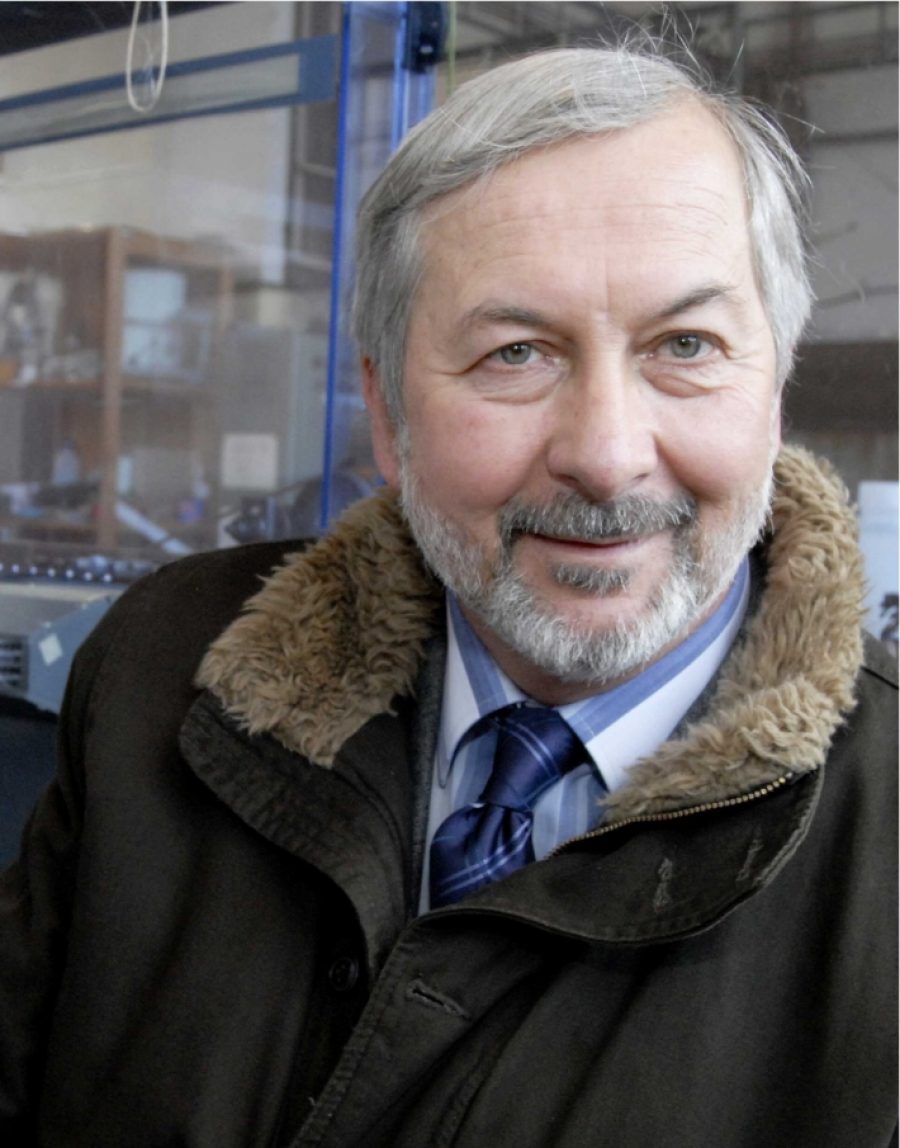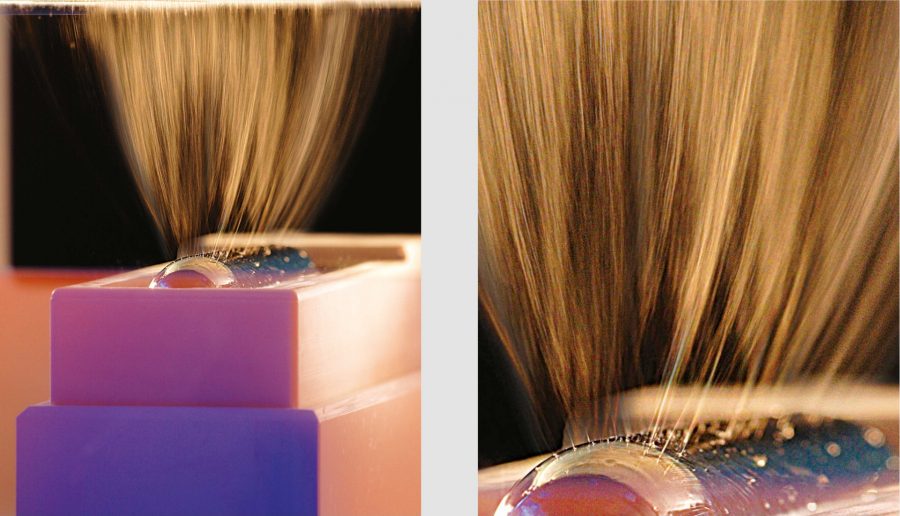OLDŘICH JIRSÁK
Professor Oldřich Jirsák (*1947) is the author of about 60 patents, based on which 12 production lines have been built in the Czech Republic, United States, United Kingdom, Australia, Malaysia, Venezuela and China.

Oldřich Jirsák; Technical University of Liberec
He was the first in the world to develop a technology that produces a large number of nanofibres. A new industry was created when his team, together with the Elmarco Company in Liberec, produced a prototype of a machine for producing nanofibres – Nanospider. Oldřich Jirsák graduated from the Faculty of Natural Sciences at Palacký University in Olomouc. In 1979 he joined the Department of Non-woven Textiles at the Technical University of Liberec. He became Head of the Department in 1990 and is a scientific researcher today.
NANOSPIDER

Production of nanofibers on the "Nanospider"; Technical university in Liberec

A polymer solution is poured into a tray in which a rotating metal roller is connected to a high voltage source. A thin film of polymer solution is formed in the roller, from which ten to hundreds of fibres are drawn by electrostatics. These are deposited on the backing material of various types of nonwoven textiles or fabric. A layer of nanofibres is formed on the foundation. The result is a material that can be used for various types of products.
Nanospider spinning; www.youtube.com, ElmarcoCompany
Nanofibres are used in medicine, construction, clothing, and in the automobile and aerospace industries. For example, patches containing substances with medicinal and antibacterial properties are produced from nanofibres. Other products include membranes for sports and working shoes or outdoor clothing. The membrane has an extreme ability to protect from wind and sweat. There are also highly efficient filters that can capture, for example, bacteria, viruses, pollen and fine dust particles which are often carriers of poisonous or carcinogenic substances. The development of other applications, such as artificial vessel materials, is also promising. Scientists from the Technical University of Liberec working in the field of tissue engineering with so-called scaffolds.
The nanofibre structure is planted with cells of bone tissue, skin or nerve fibres. After implantation into the body, the nanofibrous structure degrades and the result is the full recovery of damaged, diseased or missing tissue. According to Oldřich Jirsák, his inspiration came from articles about laboratory-produced nanofibres, which he read in scientific magazines. He suspected it was something peculiar and exciting, something so significantly different from ordinary materials that to make it into an industry would mean a great breakthrough. Luckily, his team had very expensive high voltage sources from his previous research and suitable polymers from other projects. It made it easier to start, because investing tens of thousands of dollars into a first vague idea is quite unrealistic.
J
“For achieving good results, do not worry too much about the matters of money. Otherwise your mind will be clouded and not allowed to access the higher spheres of creation and the breath-taking heights of scientific research,” said Jirsák to younger colleagues while receiving a gold medal at the Technical University of Liberec.
AWARD
The State badge of honor – Medal of Merit was awarded to Professor Jirsák in the year 2008 and the Gold medal of Technical University of Liberec in the year 2010. He says he would enjoy the research more if he could stay anonymous. He appreciates the awards and honors but is even more pleased that the results of scientific research have been put into practice. He finds it a bit unfair that he is the only one awarded – you cannot achieve much working alone in research work. Professor Jirsák recognises the honors as appreciation for the entire research team and is glad that this success is associated with the name of the Technical University of Liberec. “Achievements are a collective affair and I love to work in a team,” says Professor Jirsák.

